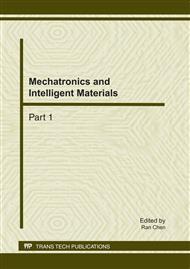p.122
p.127
p.132
p.137
p.142
p.147
p.152
p.156
p.161
Influence of Process Papameters by Vibrational Cooling-Shearing Slope on Microstructures of Semi-Solid ZAlSi9Mg Alloy
Abstract:
An experimental vibrational cooling-shearing slope was developed to prepare the ZAlSi9Mg semi-solid alloy. The results show that the molten alloy is nucleated heterogeneously under shearing of the gravitation and vibration on the inclined cooling plate surface. Primary α-Al phase converts gradually from the cellular dendrite into tiny spherical or granular crystal. Under 600°C of pouring temperature, 600mm of casting length and 50Hz of vibration frequency, the semisolid alloy melt with good microstructure can obtained. In the alloy melt the average grain size of the original α-Al phase is 50μm, and its shape factor is 0.71. Mechanical vibration can refine obviously the microstructure of ZAlSi9Mg alloy. Along with increasing of vibration frequency, the original α-Al phases are refined obviously, their roundness is improved.
Info:
Periodical:
Pages:
142-146
Citation:
Online since:
February 2011
Authors:
Price:
Сopyright:
© 2011 Trans Tech Publications Ltd. All Rights Reserved
Share:
Citation:


